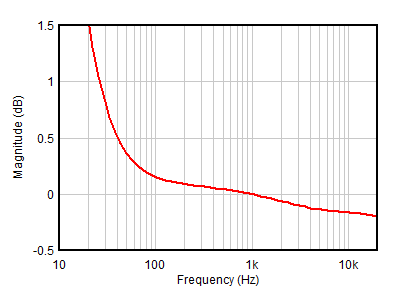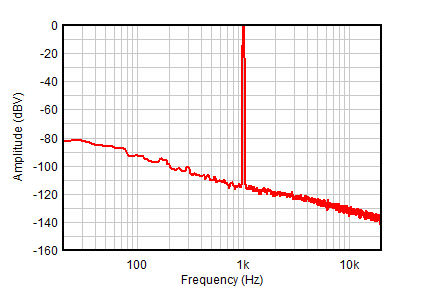ZHCSJH0C March 2019 – September 2022 OPA1655 , OPA1656
PRODUCTION DATA
- 1 特性
- 2 应用
- 3 说明
- 4 Revision History
- 5 Pin Configuration and Functions
- 6 Specifications
- 7 Detailed Description
- 8 Application and Implementation
- 9 Device and Documentation Support
- 10Mechanical, Packaging, and Orderable Information
8.2.1.3 Application Curves
The deviation from the ideal RIAA transfer function curve is shown in Figure 8-4 and normalized to an ideal gain of 40 dB at 1 kHz. The measured gain at 1 kHz is 0.05 dB less than the design goal, and the maximum deviation from 100 Hz to 20 kHz is 0.18 dB. The deviation from the ideal curve can be improved by hand-sorting resistor and capacitor values to their ideal values. The value of C4 can also be increased to reduce the deviation at low frequency.
A spectrum of the preamplifier output signal is shown in Figure 8-5 for a 10 mVRMS, 1-kHz input signal (1-VRMS output). All distortion harmonics are below the preamplifier noise floor.
 Figure 8-4 Measured Deviation From Ideal RIAA Response
Figure 8-4 Measured Deviation From Ideal RIAA Response Figure 8-5 Output Spectrum for a 10-mVRMS, 1‑kHz Input Signal
Figure 8-5 Output Spectrum for a 10-mVRMS, 1‑kHz Input Signal